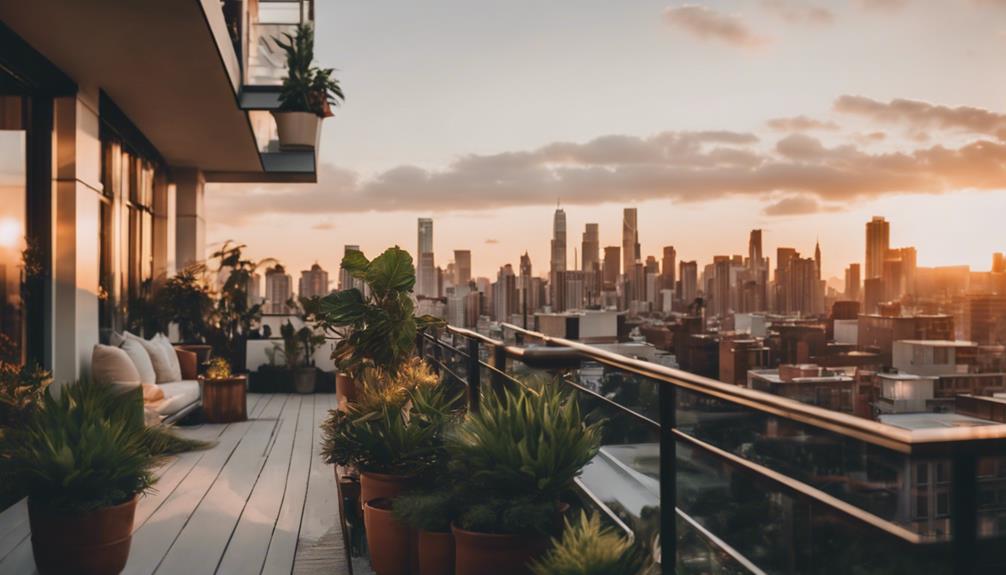Living close to family can be both enjoyable and challenging. On one hand, you have immediate support, shared experiences, and a strong emotional connection. On the other hand, you may feel obligated, have unexpected visits, and struggle to maintain personal space. It is important to establish boundaries in order to meet your own needs while also meeting family expectations. While you may find happiness in family events, it can disrupt your daily routine. Considering the advantages and disadvantages can help you manage this situation. If you are interested in learning how to achieve this balance while maintaining your independence, there is more to discover.
Key Takeaways
- Proximity to family offers immediate support but requires clear boundaries to prevent feelings of overwhelm and obligation.
- Emotional benefits include a strengthened sense of belonging and shared experiences, yet personal space is essential for balance.
- Living nearby facilitates participation in family milestones, but can lead to guilt during emergencies if assistance isn't possible.
- Regular family check-ins and open communication can foster healthy relationships while respecting individual needs and boundaries.
Benefits of Proximity to Family

Living near family offers you a treasure trove of benefits, from immediate support to cherished bonding experiences.
You can invest time in younger relatives by babysitting, attending their games, and creating lasting memories together. Quality time with older relatives allows you to share stories and wisdom that enrich your life.
With family nearby, help is always at hand, whether it's for childcare or a quick favor, saving you time and money.
You'll find it easier to participate in major milestones like graduations and weddings, strengthening your family ties.
Most importantly, the emotional support network you cultivate provides comfort during challenging times, ensuring you never feel alone in maneuvering life's ups and downs.
Challenges of Living Nearby
While proximity to family can offer support, it often necessitates establishing clear boundaries to prevent stress and overwhelm.
You might find that family members expect more of your time and energy, leading to feelings of obligation. Surprise visits can disrupt your daily routine, making it hard to maintain your own schedule.
It's common to feel guilty when you can't help out, especially during family emergencies or events. You may also face pressure to attend every gathering, which can strain your personal life.
Guiding internal family politics can create uncomfortable situations, leaving you feeling torn. Balancing these dynamics requires constant communication and clear expectations to guarantee that your relationship with family remains supportive rather than stressful.
Weighing Your Options

Before making a decision, it's important to carefully weigh the benefits and drawbacks of living close to family. Consider what matters most to you: the joy of shared moments or the need for personal space. Use the table below to help clarify your thoughts.
| Benefits | Drawbacks | Considerations |
|---|---|---|
| Investment in younger relatives | Need for clear boundaries | Pro and con analysis |
| Help available nearby | Surprise visits | Impact on personal life |
| Participation in major milestones | Guilt when unable to help | Long-term goals assessment |
Reflecting on these factors will guide you toward a decision that aligns with your lifestyle and values. Take your time to evaluate each aspect before committing.
Emotional Effects of Closeness
Emotional closeness with family can greatly enhance your sense of belonging and security, making it easier to steer through life's ups and downs.
When you live near your family, you share experiences that deepen your bonds, such as celebrating milestones or simply enjoying casual get-togethers. These interactions help alleviate feelings of loneliness and homesickness, providing a reliable emotional support network during challenging times.
You'll also find that maneuvering through life's changes, like a new job or personal loss, becomes less intimidating with family nearby. However, you may need to balance closeness with boundaries to avoid feeling overwhelmed.
Ultimately, the emotional benefits of proximity can create a nurturing environment where you feel valued and understood.
Moving Considerations to Evaluate

Evaluate the practical aspects of moving to guarantee it aligns with your lifestyle and long-term goals.
Consider how the change impacts your day-to-day life, financial stability, and community connections.
Logistics of Moving: Plan how you'll transport and set up your new space efficiently.
Financial Implications: Assess the costs of moving against your current living arrangements.
Community Integration: Think about how relocation affects your social network and support systems.
Future Planning: Reflect on how your new living arrangements will influence your personal and professional growth.
Balancing Personal Space and Family
Finding the right balance between personal space and family interactions can be challenging when you live nearby. To maintain your autonomy while nurturing family bonds, set clear boundaries. Communicate your needs and establish times for family gatherings versus personal time.
| Strategies | Benefits |
|---|---|
| Schedule regular visits | Strengthens relationships |
| Designate quiet hours | Respects personal space |
| Create family traditions | Builds shared memories |
| Practice saying no | Reduces obligation pressure |
Building Healthy Family Relationships

Building healthy family relationships requires open communication and a willingness to understand each other's perspectives. You need to actively listen and express your thoughts honestly to foster trust and connection. Setting boundaries is essential to guarantee everyone feels respected and valued.
Prioritize regular family check-ins to share feelings and experiences.
Practice empathy by trying to see situations from other family members' viewpoints.
Celebrate each other's successes, no matter how small, to strengthen bonds.
Create traditions that bring everyone together, promoting shared memories and joy.
How Can Military Families Balance Living Near Family and Championing Education?
Military families face the challenge of balancing living near family and championing education. However, with organizations like cort supports military education, they can access resources and support to ensure their children receive quality education while still being close to their loved ones.
Conclusion
Ultimately, deciding whether to live near family comes down to what you value most.
While 70% of people report feeling happier when they've strong family ties, it's essential to balance that happiness with your personal space and growth.
Consider what works best for you—embracing the joy of closeness while setting boundaries can lead to healthier relationships.
By weighing the benefits and challenges, you can find a living situation that nurtures both your connections and your individuality.









